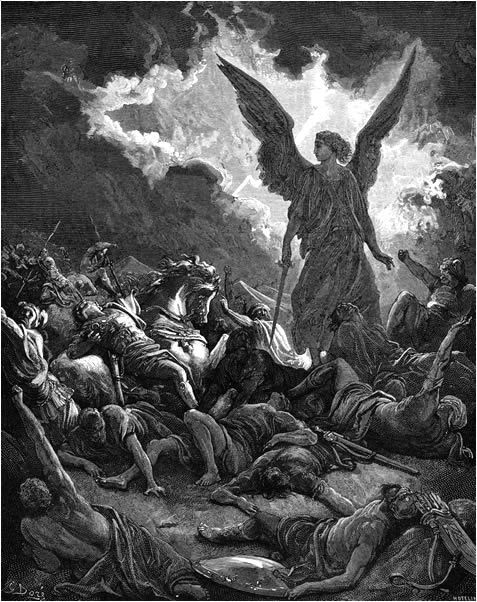The destruction of Sennacherib's host by Gustave Doré, 2 Kings 19:35-37, Bible.Gallery

The destruction of Sennacherib's host created and it was drawn with engraving style.
Artwork Description
The painting depicts a terrifying divine intervention, a catastrophic event recounted by both the prophet Isaiah and the author of the Book of Kings. Sennacherib, the Assyrian king, had been threatening to annihilate Jerusalem and had even uttered blasphemous words against the God of Israel. In response to Hezekiah's prayer for deliverance, the Lord pledged complete and swift salvation. This salvation came through the annihilation of the invading Assyrian army. "The angel of the Lord went out and struck down a hundred and eighty-five thousand men in the Assyrian camp." Remarkably, this occurred in a single night. It was neither a nighttime assault by mortal enemies, nor a violent storm, nor a pestilence, nor a desert simoom, as some scholars have theorized. Instead, it was a direct divine intervention, akin to the one that took the lives of all the firstborn in Egypt in a single night. The events unfolded without disturbance or alarm. The entire Assyrian host was in good health at nightfall, only to be discovered as lifeless bodies the next morning. Curiously, the Assyrian monuments contain no reference to this event, as historical records rarely document their own defeats. However, Herodotus, during his time in Egypt, heard a story of Assyrian defeat that, albeit veiled in some aspects, shares several similarities with the scriptural account.